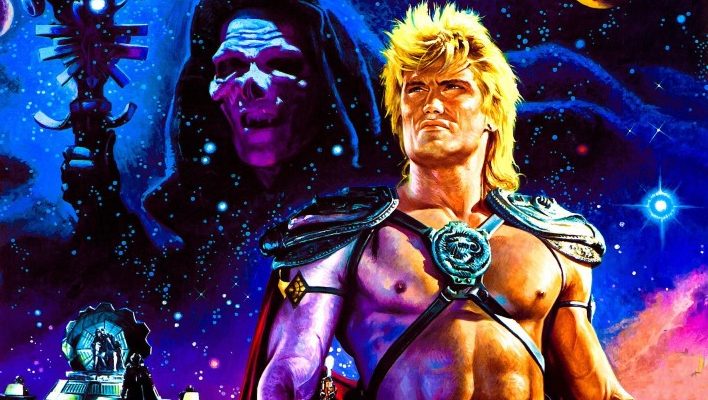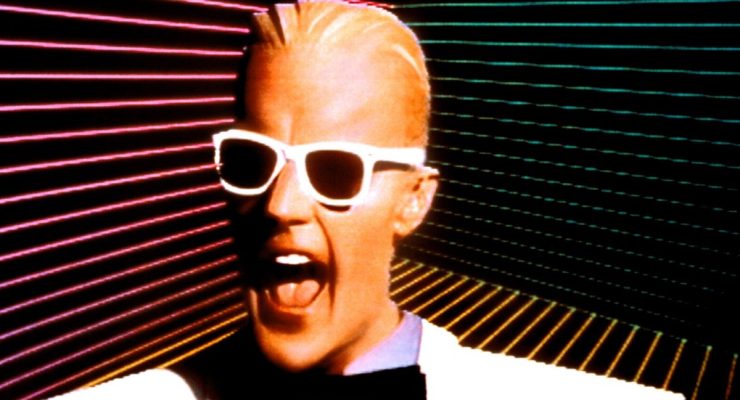Trevor Hogg chats with visual effects supervisor Christopher Townsend…
“I come very much from a design background,” states Visual Effects Supervisor Christopher Townsend who studied Graphic Design at Coventry University. “I learnt a lot about composition and how to place things in relation to each other so as to make a decent looking image.” The native of Britain readily admits, “What I don’t have particularly is a highly technical scientific brain.” 11 years were spent at Industrial Light & Magic. “I was very much a generalist when I worked there,” says Townsend whose first ILM film credit was as a Computer Graphics Artist. “One of the things that Congo [1995] taught me well was the fundamentals of computer graphics.” Other projects followed such as The Lost World: Jurassic Park (1997), A.I. Artificial Intelligence (2001) and The Chronicles of Narnia: The Lion, the Witch and the Wardrobe (2005). The most controversial assignment involved the altered scene in the 1997 special edition of Star Wars: Episode IV – A New Hope (1977) where Han Solo kills a bounty hunter out of self-defense. “I was surprised that the response was so dramatically against it. It was George’s [Lucas] idea of making the movie a little more p.c. [politically correct], which has offended people. To be honest, there were times I have wished that once the movie is made you leave it as is.”
“Something that was unique was Davey Jones from Pirates 2,” remarks Christopher Townsend who worked on Pirates of the Caribbean: Dead Man’s Chest (2006) for Industrial Light & Magic. “I remember sitting in the theatre and thinking, ‘I know that’s a visual effect but I cannot tell.’” The biggest challenge at ILM was the Star Wars prequel trilogy. “I was the Sequence Supervisor on the first one. I was between gigs as a Digital Production Supervisor so I worked on Episodes II & III briefly as an artist.” Star Wars: Episode I – The Phantom Menace (1999) consisted of 1900 visual effects shots spread over three units, with a year and a half spent in post-production. “We were breaking new ground and setting a new bar for the amount and quality of the work.” Journey to the Center of the Earth (2008) caused Townsend to leave the landmark visual effects company. “Eric Brevig [Yogi Bear] was the visual effects supervisor at ILM for a long time; worked on a few shows with him. He got the opportunity to direct it and asked me to leave ILM at that point to go to be his visual effects supervisor.” The project was the first feature length stereoscopic movie created for the modern era of high definition and digital projection. “We were breaking new ground not even realizing it because we were running so fast trying to solve problems. It was a great training ground which has helped me immeasurably over the last few years.”
“Having a good eye and being able to know when to step in and offer a solution,” believes Christopher Townsend is the key to being a successful visual effects supervisor. “It’s a lot of p.r. work in some ways, trying to make sure that you’re getting the very best out of the entire team.” The visual effects industry is experiencing a remarkable period of growth. “The studios are using visual effects more and more. Visual effects compositing is becoming in many ways the reason why a lot of people go to see a movie.” The success has brought about a call for unionization to ensure that VFX facilities offer fair wages and benefits. Another significant issue is the use of international vendors which has had a great impact on the industry in America. “You might be able to get the work done cheaper somewhere else but ultimately it’s the matter of getting the best quality on the screen.” As for his attitude towards 3D, Townsend remarks, “3D is incredibly difficult and challenging because you have to make sure that the left and right eye work harmoniously as a unit.” There is also the contentious issue of converting a 2D film into 3D during post-production. “People are getting more educated from an artistic point of view of what makes for a most successful conversion.” The notoriously poor job associated with Clash of the Titans (2010) was no fault of the company responsible for the assignment. “They weren’t given enough time or resources to do a top quality product as far as I’m concerned.”
After serving as the Visual Effects Supervisor for X-Men Origins: Wolverine (2009), Ninja Assassin (2009), and Percy Jackson & the Olympians: The Lightning Thief (2010), Christopher Townsend was recruited to assist with bringing Captain America: The First Avenger (2011) to the big screen. “I didn’t grow up reading American comics because I’m from England,” he confesses. “I found myself being attracted to the process; it was very clear that Joe [Johnston] wanted to make the best movie rather than the best superhero movie.” The director was easy to communicate with as he also comes from a visual effects background. “Joe certainly knows what he wants and he’s incredibly instrumental in the final image and how we get there. Throughout the process he would be storyboarding things for us.” Johnston [October Sky] made a decision which made things more difficult for Townsend. “He made a statement in the trades early on that he didn’t want to work with pre-viz.” So there was no opportunity to map out shots before hand. “It was challenging because you had to react to everything.”
“What we were trying to do was make a film which would appease the fans and those who weren’t big fans could watch,” reveals Christopher Townsend; he welcomed the creative task of making an origin story about a scrawny U.S. Army recruit who is transformed into a hulking World War II super soldier. “From my point of view it was the most interesting aspect of doing this kind of work because you get to set the tone of who the character is.” The over 1600 visual effects shots featured in the comic book picture were divided between 13 VFX facilities located in California, Australia, Germany, and Britain. To create Steve Rogers (Chris Evans) as a 98-pound weakling, a combination of practical and computer generated effects were utilized. Actors were placed on boxes to change eye lines between them and Evans; a body double was deployed, and a process known as Digital Plastic Surgery, developed by Californian company Lola VFX, was used to make “Skinny Steve” a reality. “The thing I misjudged was how much higher a quality we needed for the final take,” admits Christopher Townsend. “We weren’t just doing a five second piece with a guy skinning down and, ‘Wow! That’s really cool!’ That wasn’t the point of the film. The point was to get the audience not to even question and think about it as an effect.” Townsend observes, “The tools have become easier, faster and far more sophisticated but ultimately I don’t think the industry has changed that much; it’s still about creating a good-looking image.”
Many thanks to Christopher Townsend for taking the time out of his busy schedule for this interview.
For more on the visual effects behind Captain America be sure to check out Trevor’s articles Eye for Imagery: Looking Inside the VFX Industry and Raising the Shield: The Making of Captain America: The First Avenger.
Trevor Hogg is a freelance video editor and writer who currently resides in Canada.










